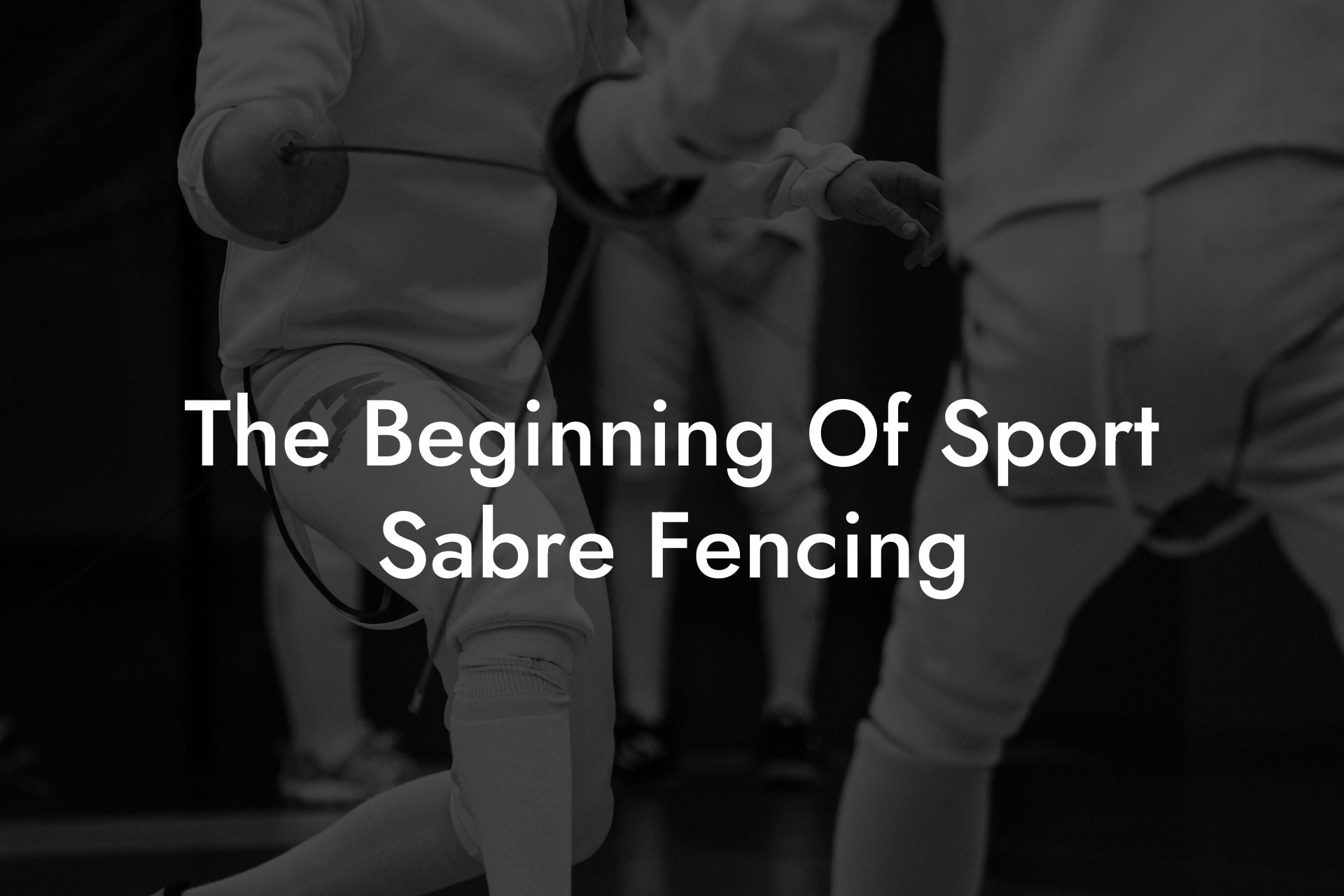Discover the thrilling world of sport sabre fencing - a dynamic and lightning-fast discipline with deep historical roots. In this article, we explore the origins of sabre fencing, its unique qualities, and how you can get started in this exhilarating activity.
The Beginning Of Sport Sabre Fencing Table of Contents
A Brief History of Sabre Fencing
The Early Origins
Sabre fencing has its origins in the cavalry battles of Europe and the Middle East during the 18th and 19th centuries. The sabre, a cutting and thrusting weapon, was the ideal choice for horse-mounted soldiers due to its agility and lethal capabilities. The Hungarian hussars, known for their skill and bravery, were especially renowned for their mastery of the sabre.
The Development of Sport Sabre Fencing
As fencing evolved into a competitive sport, sabre became one of its three distinct disciplines, alongside epee and foil. The Italian school of fencing played a significant role in the development of modern sabre techniques, while Hungarian maestros like Italo Santelli and Laszlo Borsody introduced their own innovations. In the early 20th century, Hungary dominated the international sabre scene, and their fencers became synonymous with elegance and prowess.
What Sets Sabre Apart?
Scoring and Targets
In sabre fencing, points can be scored by striking the opponent with either the edge or the point of the blade. The target area is the torso, arms, and head, a reflection of its cavalry roots, where strikes to these areas would have been most lethal. Sabre is distinguished by its explosive speed and aggressive tactics, with fencers often launching simultaneous attacks resulting in dramatic parries and ripostes.
Right of Way Rule
Similar to foil, sabre fencing employs the right of way rule, which determines who scores when both fencers land a hit simultaneously. The rule encourages clean attacking actions and strategic decision-making, as fencers must establish priority by initiating an attack, defending with a parry, or otherwise seizing the initiative.
Getting Started in Sabre Fencing
Finding a Club and Coach
To begin your sabre fencing journey, seek out a reputable local fencing club like Anchorage Fencing Club. A knowledgeable and experienced coach will guide you through the foundational techniques, rules, and safety aspects of sabre fencing, ensuring you develop proper habits from the start.
Basic Equipment
- Mask: A specially designed sabre fencing mask protects your face and head during practice and competition.
- Jacket and Plastron: These garments provide essential protection for your torso and arms, with the plastron offering additional padding for the weapon-side arm.
- Glove: A sturdy fencing glove is worn on the weapon hand, offering grip and protection.
- Sabre: Beginner sabres are typically lightweight, allowing you to develop technique and strength gradually. Advanced fencers may choose to customize their sabres for optimal performance.
The Beginning Of Sport Sabre Fencing Example:
Imagine yourself facing an opponent on the fencing piste. You both salute, masks on, and take your starting positions. As the referee commands "En garde!" your adrenaline surges. You explode into action, launching a daring attack at your opponent, who counters with a swift parry and riposte. The duel intensifies, a dazzling display of precision, speed, and tactical prowess. As the final point is scored and you remove your mask, the exhilaration and challenge of sabre fencing leaves you hungry for more.
Sabre fencing offers a unique and exhilarating experience, combining the rich history of cavalry combat with the modern athleticism and strategy of sport fencing. If you're inspired to take up the sabre and become part of this exciting community, Anchorage Fencing Club is the ultimate gateway for your swordfighting journey. And once you've enjoyed this thrilling ride, don't forget to share this article with your fellow aspirant fencers and explore more informative guides waiting for you at Anchorage Fencing Club!













